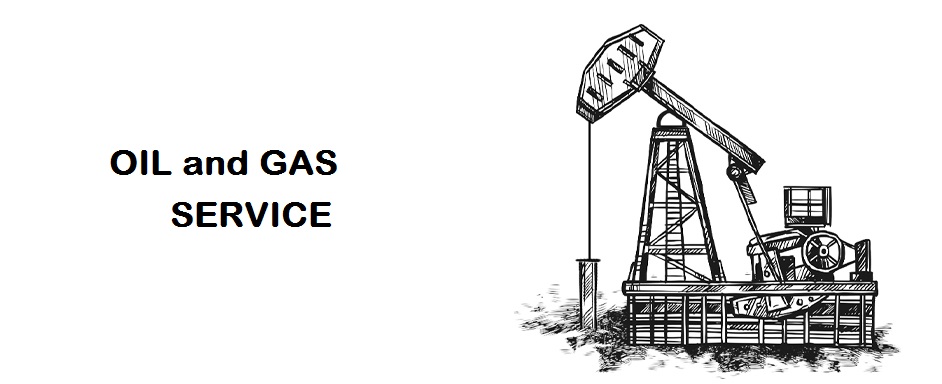
Injection well survey
The essence of the method consists in injecting solutions of chemical indicators into injection wells together with injected water, followed by sampling of the produced fluid along the surrounding production wells at a specified frequency. Conducting laboratory tests of samples with subsequent analysis of the results.
Destination
- Obtaining current information about the geological and physical properties of the interwell space between the injection and production zones;
- Establishing the direction of distribution of the injected fluid and the area of influence of individual injection wells;
- Study of the nature of oil displacement by injected fluid;
- Quantitative waterflood definitions;
- Identification of the effectiveness of the use of various chemical reagents for enhanced oil recovery.
Stages of work
1. Injection and surrounding production wells are selected;
2. Conducted (well test) by the method of non-stationary filtration - pressure drop in order to determine the filtration characteristics of the reservoir and assess the state of the bottomhole zone of the well to simulate the parameters of indicator injection.
* According to the results of interpretation, in order to obtain the most complete and reliable information during tracer studies, the BFZ can be cleaned using a wellhead pulse generator, using the energy of the reservoir, without the involvement of a workover crew;
3. Water samples are taken from the surrounding production wells in order to select an indicator and determine the background value;
4. The indicator is injected into the injection well with subsequent sampling from production wells according to the work plan;
5. Laboratory analysis of selected samples is carried out to determine the mass concentration of the indicator;
6. The results are interpreted and analyzed;
7. The final report is being compiled.
Chemicals Used
- The following can be used as indicators:
- Nitrogen compounds (nitrates, carbamides);
- Phosphorus-containing (orthophosphates);
- Sulfur-containing substances (thiocyanates);
- Fluorescent substances;
- Organic xanthene dyes;
- Aromatic amino acids;
- Salts of lower carboxylic acids;
- Lower alcohols;
- Boron compounds;
- Polyhydric alcohols (carbohydrates).
Software
- "Interpretation of data from indicator studies (Tracer 1.1)";
- "Production and Injection Well Test Interpretation (WTA)".
Determined parameters and characteristics
Based on well test results:
- Reservoir flow type;
- Reservoir model type;
- Matrix permeability;
- Volume of cracks;
- Crack opening;
- Injectivity factor;
- BAR status by Skin factor;
- Reservoir pressure (interpolated);
- Bottomhole pressure.
Lab data:
- Generalized characteristics of high conductivity zones;
- Interval characteristic of the distribution of reservoir properties of the studied formation;
- Map of hydrodynamic connection between injection and production wells;
- Reservoir characteristics of the formation under study.
- Filtration flow direction;
- Speeds of filtration flows, m/day;
- The amount of indicator obtained in the production well through the i-th system of filtration paths, kg;
- The effective volume of filtration channels (flow tubes) of the i-th system of filtration paths between the injection and production wells, m3;
- Total effective flushed pore volume of the reservoir section between the injection and production wells, m3;
- The volume of water supplied daily through the flushed flow tubes from the injection well to the production wells, m3/day;
- Spectrum of changes in the permeability of filtration paths within the interwell space between the injection and production wells, µm2.
- Swept coverage ratio of the study area of the reservoir by the displacement process.
- Time of tracer appearance, hour;
- Coefficient of influence of an injection well on production wells;
- The total volume of water flowing through the flushed flow tubes from the injection well to the production wells, m3/day;
- Maximum permeability of the study zone from injection to production wells;
- Scheme of correlation of studied horizons.
Features of the work
- Removal and processing of data from the pressure drop curve (PDC) in order to determine the filtration characteristics of the reservoir and assess the state of the bottomhole zone of the well before conducting tracer studies;
- Construction of a correlation scheme for the studied horizons in order to obtain extended information about their presence and bedding in the studied objects;
- Determination of hydrodynamic connection and filtration rate simultaneously in a group of injection wells using several types of indicators simultaneously;
- The ability to clean the bottomhole formation zone (BFZ) based on the results of well testing using a wellhead pulse generator, HMI using the energy of the formation, without the involvement of a workover crew.
S&IA "INNOVATIVE TECHNOLOGIES AND SYSTEMS"
 Kyiv, st. Zhmerinskaya, 1
Kyiv, st. Zhmerinskaya, 1
 +38 097 208-5939
+38 097 208-5939


